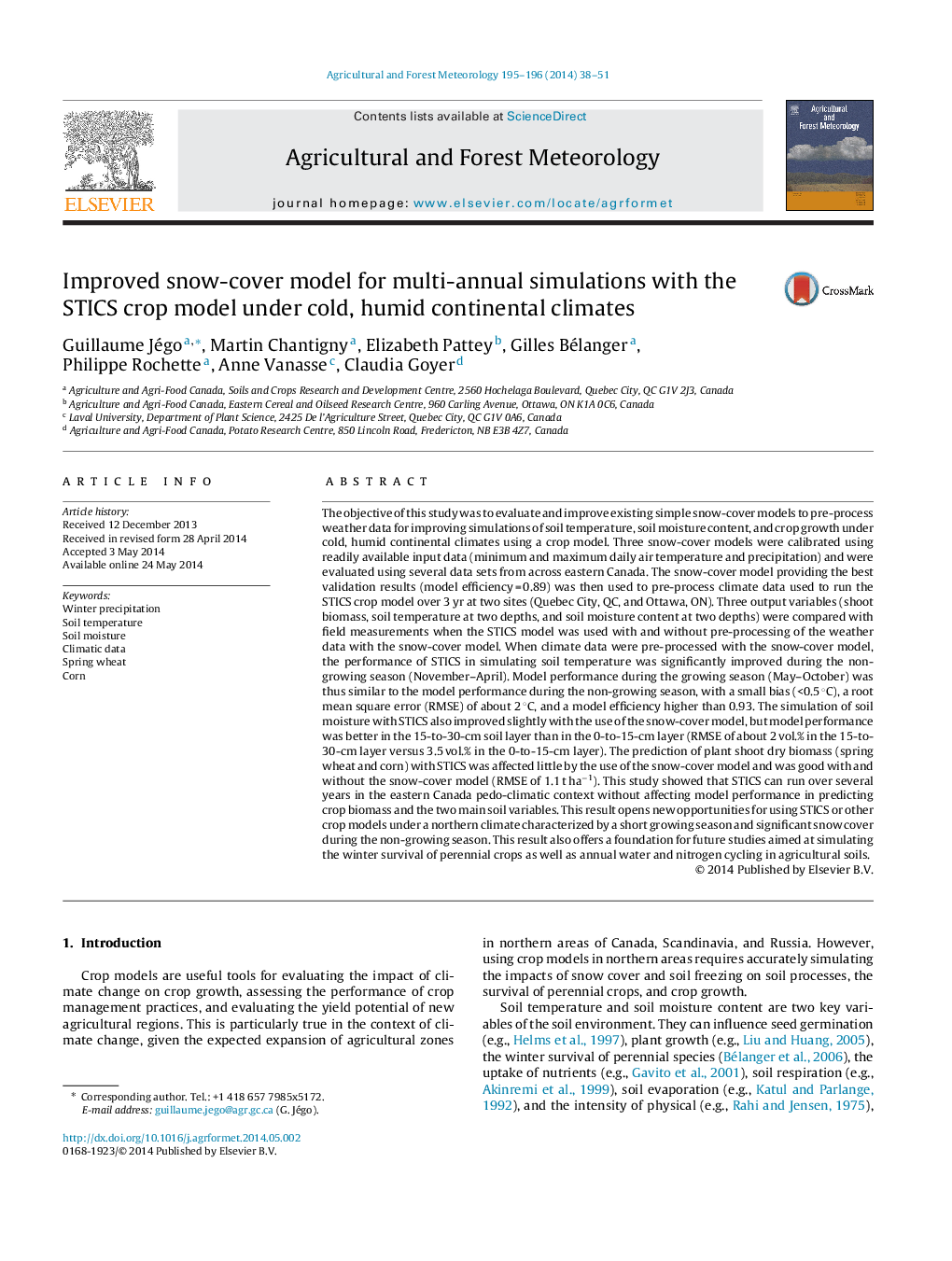| کد مقاله | کد نشریه | سال انتشار | مقاله انگلیسی | نسخه تمام متن |
|---|---|---|---|---|
| 81726 | 158333 | 2014 | 14 صفحه PDF | دانلود رایگان |

• First evaluation of STICS under cold humid continental climates with snow cover.
• Snow cover equations improve significantly the soil variables predictions of STICS.
• It paves the way for future agricultural modeling studies in northern regions.
The objective of this study was to evaluate and improve existing simple snow-cover models to pre-process weather data for improving simulations of soil temperature, soil moisture content, and crop growth under cold, humid continental climates using a crop model. Three snow-cover models were calibrated using readily available input data (minimum and maximum daily air temperature and precipitation) and were evaluated using several data sets from across eastern Canada. The snow-cover model providing the best validation results (model efficiency = 0.89) was then used to pre-process climate data used to run the STICS crop model over 3 yr at two sites (Quebec City, QC, and Ottawa, ON). Three output variables (shoot biomass, soil temperature at two depths, and soil moisture content at two depths) were compared with field measurements when the STICS model was used with and without pre-processing of the weather data with the snow-cover model. When climate data were pre-processed with the snow-cover model, the performance of STICS in simulating soil temperature was significantly improved during the non-growing season (November–April). Model performance during the growing season (May–October) was thus similar to the model performance during the non-growing season, with a small bias (<0.5 °C), a root mean square error (RMSE) of about 2 °C, and a model efficiency higher than 0.93. The simulation of soil moisture with STICS also improved slightly with the use of the snow-cover model, but model performance was better in the 15-to-30-cm soil layer than in the 0-to-15-cm layer (RMSE of about 2 vol.% in the 15-to-30-cm layer versus 3.5 vol.% in the 0-to-15-cm layer). The prediction of plant shoot dry biomass (spring wheat and corn) with STICS was affected little by the use of the snow-cover model and was good with and without the snow-cover model (RMSE of 1.1 t ha−1). This study showed that STICS can run over several years in the eastern Canada pedo-climatic context without affecting model performance in predicting crop biomass and the two main soil variables. This result opens new opportunities for using STICS or other crop models under a northern climate characterized by a short growing season and significant snow cover during the non-growing season. This result also offers a foundation for future studies aimed at simulating the winter survival of perennial crops as well as annual water and nitrogen cycling in agricultural soils.
Journal: Agricultural and Forest Meteorology - Volumes 195–196, 15 September 2014, Pages 38–51